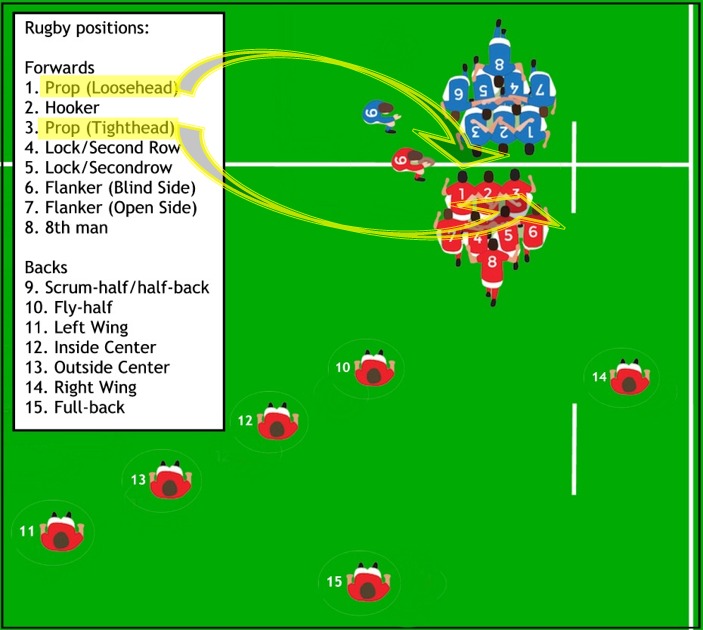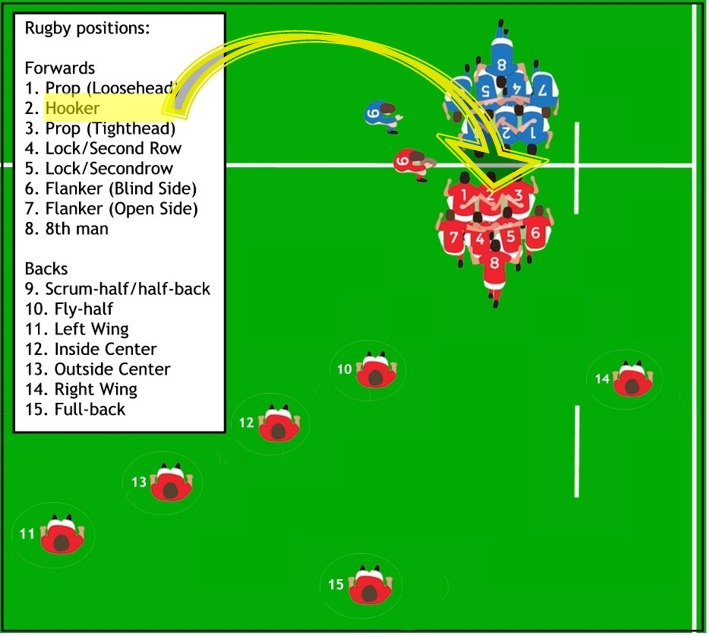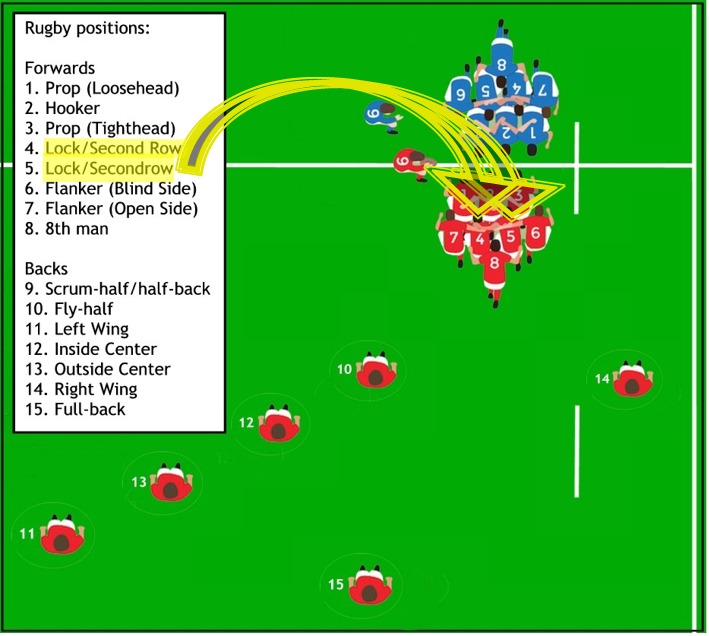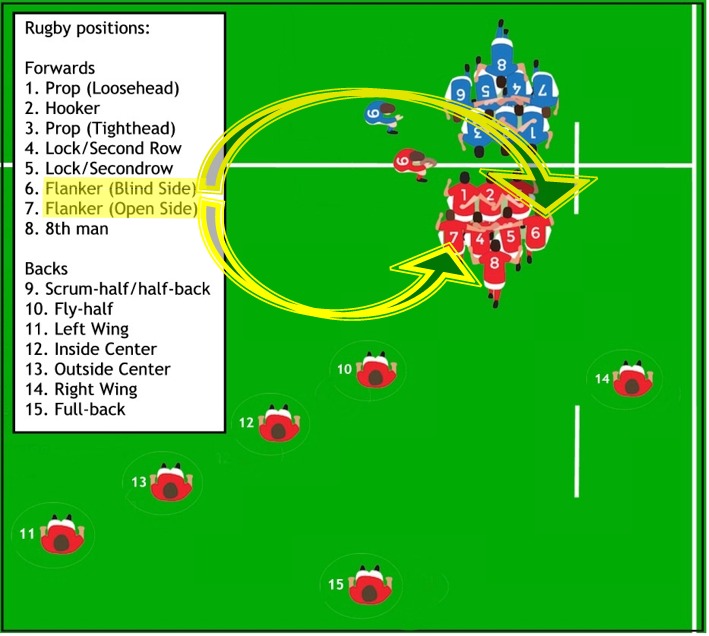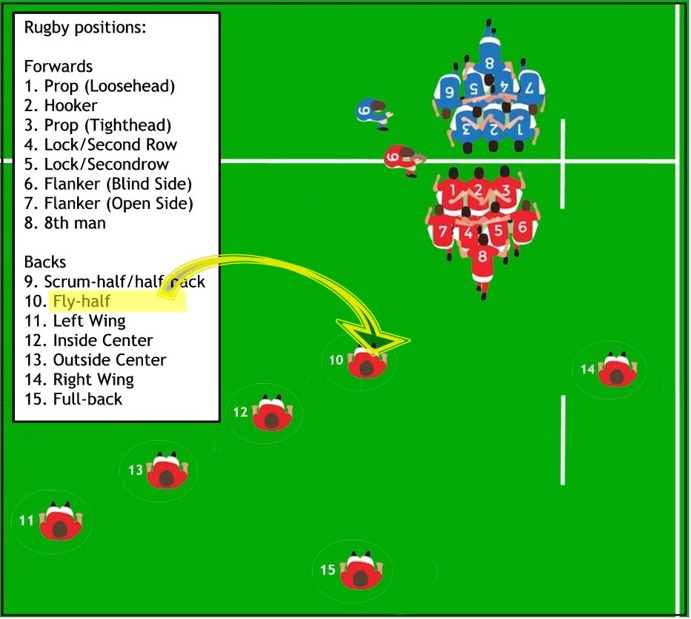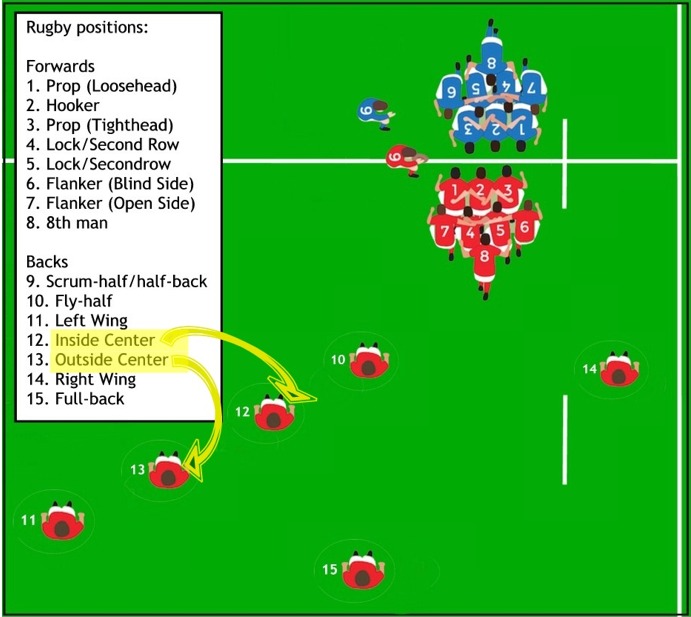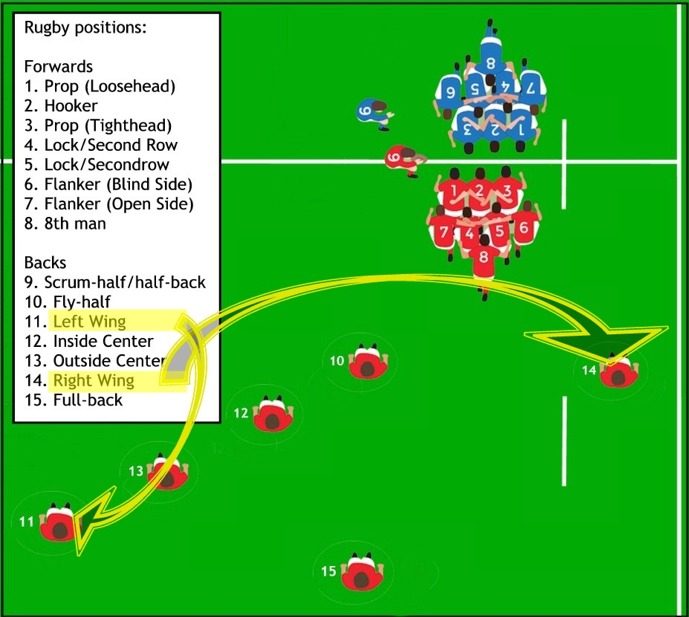Study the various rugby positions here.
There are certainly no hard and fast rules that tie a player to a particular position, but lets take a very generic look at the different positions in rugby and the very general characteristics associated to each position.
Click on the blue headers below to get a clear view of the positions on the field.
Broad shoulders and a short neck are advantages because of the force applied through the spine. To play as a prop players must enjoy the contact side of the game and be very strong.
Responsible for winning possession in both line-outs and scrums. In scrums they hook the ball from the center of the scrum back to the other forwards. In line-outs they throw the ball to the jumpers. In each case timing and accuracy are critical. Broad-shouldered, strong and fiesty are certainly important characteristics to have as a hooker.
Locks win ball from lineouts and restarts. They drive forward momentum in the scrum, rucks and mauls providing a platform for attack. The key characteristic is height, locks are usually the tallest in the team and combine their physicality with great catching skills and mobility.
The flankers key objective is to win possession through turn-overs, using physicality in the tackle and speed to the breakdown. They need to love making big tackles and a no-fear approach to winning the ball. A combination of speed, strength, endurance and handling.
The 8th mand must secure possession at the base of the scrum, carry the ball in open play, provide the link between the forwards and backs in attacking phases and defend aggressively. Good handling skills are essential, as is a great awareness of space. Power and pace over short distances is crucial - gaining territory and field position for a quick release to the backs in attack. Good communications and leadership skills.
The scrumhalf provides the link between forwards and backs at the scrum and lineouts. A true decision-maker, the 9 will judge whether to distribute quick ball to the backs or keep it close to the forwards or perhaps kick. Must be powerful, have explosive speed, all-round handling and kicking skills. The great 9s are highly confident players, with excellent game understanding. Excellent communications and leadership skills.
Muich kike the quarterback, the flyhalf orchestrates the team’s performance, the 10 will receive the ball from the 9 and choose to kick, pass or make a break based upon split-second interpretation of the phase of play. Ability to kick well out of hand, ideally on either foot, deft handling skills, pace, vision, creativity, communication skills, tactical awareness and the ability to perform under pressure.
The centres are key in both defence and attack. In defence they will attempt to tackle attacking players whilst in attack they will use their speed, power and creative flair to breach defences. Lean, strong and extremely quick. The position demands great attacking prowess, coupled with an intensity in contact to either retain or steal possession.
Wings provide the injection of out-and-out pace needed to outrun an opponent and score a try. Also important to be solid in defence. Speed, strength and good handling skills are important.
Generally perceived as the last line of defence (sweeper), the full back must be confident under a high ball, have a good boot to clear the lines and a enjoy the physicality required to make try-saving tackles. Great handling skills, pace in attack and power in defence. An ability to join the line at pace to create an overlap and try-scoring opportunities for the winger.
